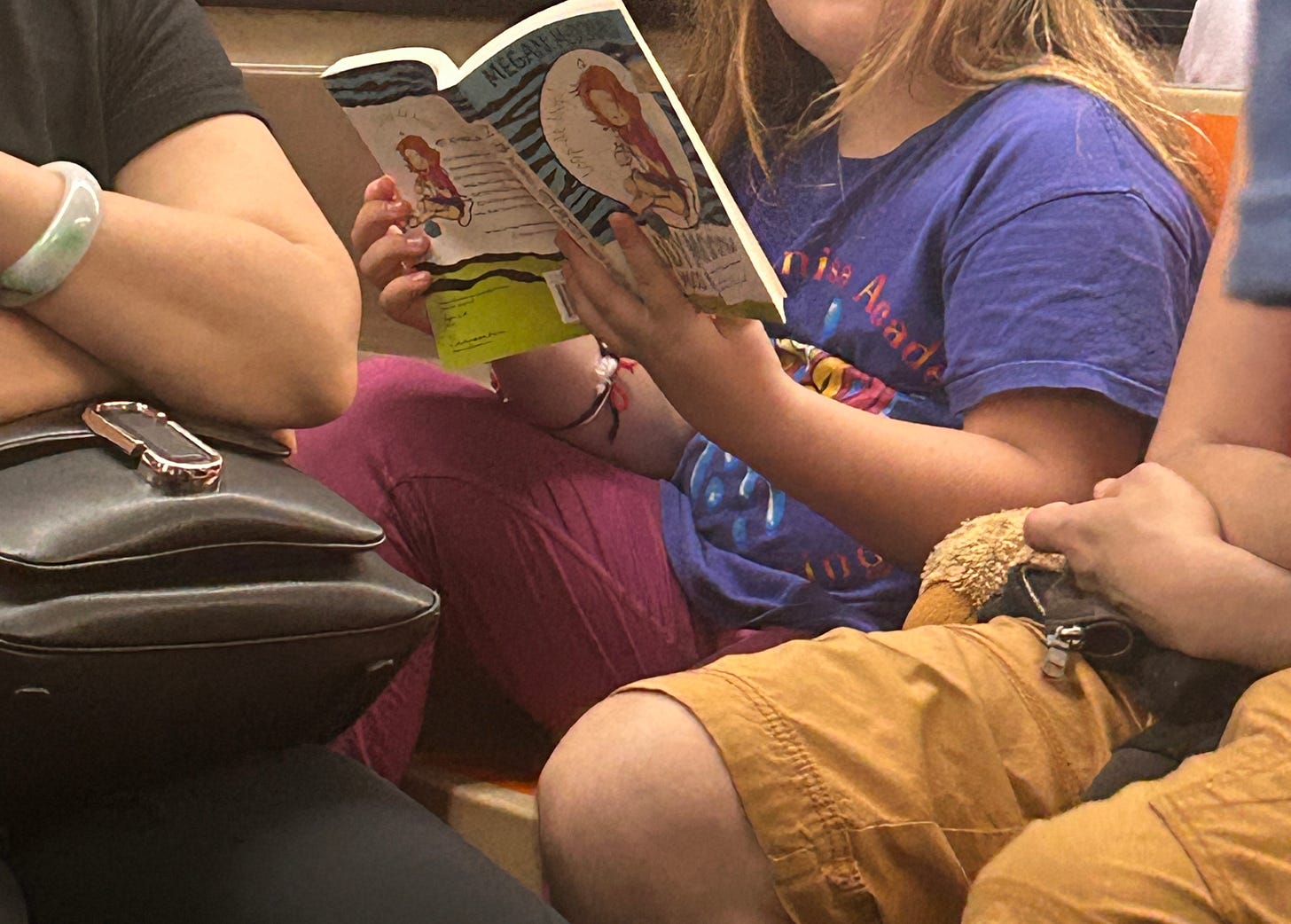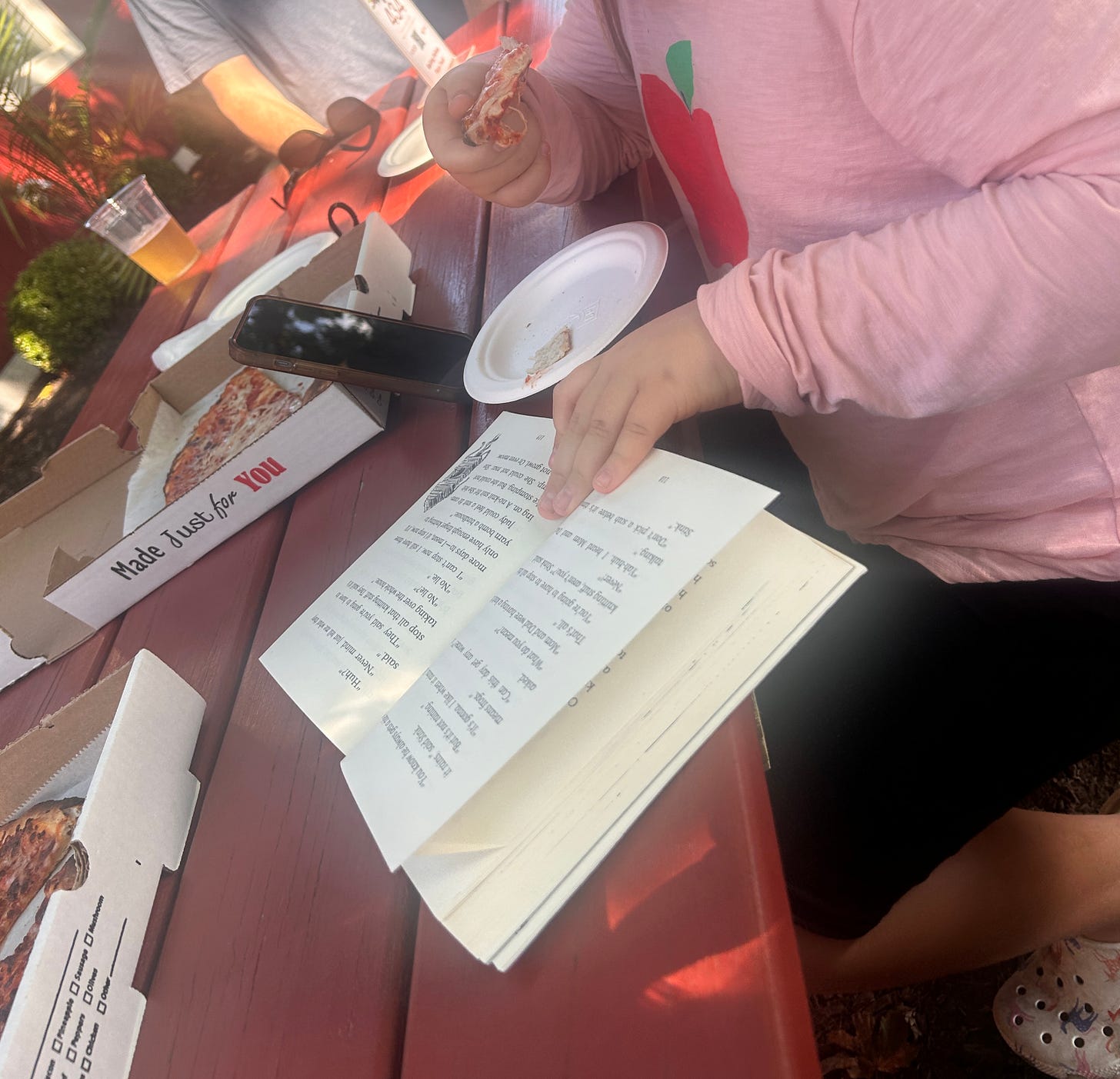How to Read Your Own Writing
AND: AcWriMo registration is OPEN! (and come write with us in Portland!)
Friends,
First. Tomorrow is October, and so I have opened the sign up for…drum roll please…AcWriMo 2025! I will have a real post about that next week, but for those of you who need November to pop up on your calendar, sign up now—it’s totally free, and a genuinely great way to get a lot of writing done before the end of the year. Forward this to your friends and tell them to subscribe, sign up, and write with us too! Last year we had something like 300 people writing with us around the world—maybe we can get to 500 the year (how wild is that?)
Also, if you’re thinking, “what’s even better than a month writing with Kelly on the internet? Spending a whole week writing with her and Mirya in person this summer!” Then you should register for our Portland writing retreat. It’s going to be amazing, restorative, and productive. Find out more here—we’d love you to come write with us.
Now the real stuff—why you should actually read what you write
Here’s something I think everyone should do before they press submit on an article or book manuscript.
Open the document.
Change the font/font size/spacing slightly so it looks different from what you’ve been staring at.
Print it out.
Go somewhere new, with a few different colored pens and perhaps some wine.
Start reading from the middle of the document, to the end, then looping back to the beginning.
And then, pay attention to how you read. Your reading behavior will tell you what kind of editing the manuscript needs.
4 S’s of reading patterns
Skim—I remember the first time I caught myself skimming. I was in Mr. Novo’s ninth grade English class, we were reading Return of the Native, and I felt like one more page describing the heath would do me in. I started rifling through the book looking for someone to save me—a person? a problem? where was the plot? could I find any dialogue? any life? But the heath persisted. (In fact, precisely at this transitional point of its nightly roll into darkness the great and particular glory of the Egdon waste began, and nobody could be said to understand the heath who had not been there at such a time. It could best be felt when it could not clearly be seen, its complete effect and explanation lying in this and the succeeding hours before the next dawn; then, and only then, did it tell its true tale.) Ugh, thank goodness I became a social scientist instead. (My only other memory is my teacher shaking his head and laughing and saying “I do like that Eustacia Vye, though!”)
Today, I find that people skim for three reasons: they already know that information, they are bored by the presentation of the information, or they are looking for the “so what.”
Skimming isn’t the Achilles Heel of academic writing. People read strategically. But if you find yourself skimming over long paragraphs in the manuscript, bracket those in purple. It’s worth coming back to them and seeing if you can revise the framing. If it’s the lit review, can some of it go in a footnote? Is it framed in terms of the stakes of the conversation/what you’re contributing? Does every sentence start with an idea? Too many “Smith says…” or “the research says…” in a row can lull people out of active engagement with the manuscript.
Stumble—When your brain starts to slow down to register an important idea, that can be good. But when it has to read sentences repeatedly, or go back a few paragraphs not to unpack meaning but to figure out what’s going on, then there’s probably some line level editing that needs to happen. Most often, I find that there are too many ideas packed into one sentence or paragraph that can be given their own space and expanded into multiple sentences or paragraphs. I also find that writers begin a thought, get distracted, write some other stuff, then come back to the thought again - so a reverse outline can help disentangle the threads you’re stumbling over.
These are the paragraphs that will want your attention, so put orange lines by them, and come back later.
Slow—In the great generational divide between team written word and team video, I will die on the hill of team written word. And one reason is because videos don’t allow you any agency over the speed at which information is presented. When you’re reading, though, you can move quickly, then slow down.
Pay attention to where your manuscript makes you slow down. This, again, isn’t necessarily a bad thing. Complicated ideas, juicy ideas, need time to digest. It could also be that you’re slowing down because things are too dense. In that case, think about whether it’s possible to breathe life into a sentence or paragraph. Is there an example you can use? A brief aside or explanation? A way to use subheadings to help readers move through a particularly dense section? Mark these in blue: probably the least pressing of your editing worries, but will improve the accessibility of your manuscript.
Jargony, opaque writing isn’t good writing: it just acts as a gatekeeper, keeping a wider audience from engaging with your ideas. You don’t have to write like that.
Submerge—my kids’ school uses one of those terrible readers that has like 3 pages of a story and then makes them answer a lot of questions about it. Last week, she was doing her reading homework, turned the page, and yelled “where did Judy Moody go??” Luckily, one of the awesome teachers at her school has made it her mission to keep Alma stocked in Judy Moody books, so she read all weekend, including on trains and at lunch with family. This, my friends, is submersion.
Now, few among us can hope to write something as captivating as Judy Moody, but you can pay attention to places you are unexpectedly charmed by your manuscript. Where do you forget you’re reading and keep turning pages? Where does the prose seem so flawless you want to google it to make sure someone else didn’t write it and you forgot to cite them? Where does the voice on the page match the voice in your head?
When you find those moments, star them. Circle them. Put exclamation points. Linger over it to capture the voice you want to write in—and channel that when you go back to revise the stumbly or slow paragraphs and sentences.
xoxo
Kelly



I reeeeaaaally want to join your writing retreat. Trying to figure out a way to make it happen!